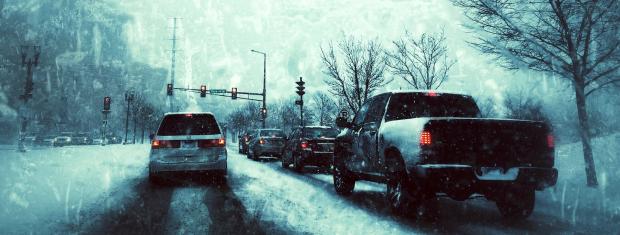
The Do's and Don'ts of Winter Driving
For many drivers, navigating treacherous roads during winter weather can be a frightening feat. Between the decreased visibility, slippery conditions and ice patches – the road really is a dangerous place to be in winter months. So dangerous, winter driving conditions claim nearly 900 lives and cause nearly 76,000 injuries every year.
We can prevent the number of accidents that occur in winter months by adjusting our driving techniques to better suit the weather conditions. Simply being mindful of the hazards on the road can make all the difference. These do’s and don’ts will help to keep you and others safe on the road this winter:
DO’S:
1.Top off Your Fluids & Fill Your Tires
Pay close attention to your fuel level throughout winter. As a rule, try to keep it a quarter full at minimum. Brutal winter temperatures can create condensation buildup in your tank, freezing your fuel lines. You could look at it this way too, more fuel means more weight, more weight means more traction. Also ensure your washer fluid is winter rated so you don’t have to worry about that freezing up on you in cold temperatures.
Check your tires more frequently in winter months as cold temperatures can cause tire pressure to fluctuate. The last thing you want is to get a flat tire in the middle of a snowstorm!
2.Slow Down
Everything takes longer on snow-covered roads. Accelerating, stopping, turning – nothing is as quick as it might be on dry pavement. Give yourself extra time to maneuver by driving slowly.
3.Accelerate & Decelerate Slowly
Applying the gas slowly is the best way to regain traction and avoid skids on snow-covered roads. Don’t attempt to get moving in a hurry by slamming on the gas. Remember it takes extra time to stop, and extra time to go in the winter. Give yourself extra time to slow down when approaching stoplights, crosswalks and stop signs.
4.Leave Extra Space Between Your Car & Other Drivers
In dry conditions, you should typically maintain a three to four second following distance from the car in front of you; but in snowy conditions, that following distance should be increased to eight to ten seconds. This will provide extra space if you skid or need to come to a stop.
5.Carry a Winter Weather Kit in Your Car
Pack a bag of winter essentials to store in your trunk in case of an emergency. If you were to become stranded, these items will help keep you alive:
- Blankets, gloves and hats
- Ice Scraper
- Folding/collapsible snow shovel
- A bag of sand to regain traction in snow
- Hand Warmers
- Winter Boots
- Sleeping Bag
These particular items will help you brave cold conditions, but you’ll still need items like jumper cables, a flashlight and more. Visit our blog to get the entire list of items that comprise a well-rounded car emergency kit.
DON’TS:
1.Don’t Use Cruise Control on Slippery Roads
Cruise control wasn’t meant for slippery or wet surfaces, doing so could force your car into a skid. The problem is that when your tires lose traction, cruise control will continue to accelerate. Your tires will slip before they can regain traction.
If you do happen to sway into a skid, come off of the gas, don’t hit the brakes and look straight where you want to go. That is the best way to get out of a skid.
2.Don’t Drive with Worn Out Wiper Blades
Snow, ice and sleet are bad enough on your visibility in the winter, don’t add blurry wiper blades to the equation! Inspect your wipers before winter hits to ensure they aren’t damaged. Damaged wiper blades could create scratches on your windshield, further limiting your visibility. Replace them immediately if they aren’t clearing your windshield to avoid dangerous obstructions in vision.
3.Don’t Tailgate
Everything takes longer in snowy conditions, including coming to a complete stop. If you tailgate another vehicle you might not be able to stop your vehicle fast enough, resulting in a collision.
4.Don’t Power Up Hills
Using too much gas on a steep incline will only cause your tires to spin. Try to gain some momentum approaching the hill and use it to take you to the top. Once you reach the top, reduce your speed as you proceed downward.
5.Don’t Drive Distracted
Driving in winter conditions is dangerous enough as it is, making it to your destination safely requires your undivided attention. Distracted driving accounts for approximately 25% of all motor vehicle crash fatalities. Don’t use your phone or engage in any other activity that takes your attention off of the road ahead.


